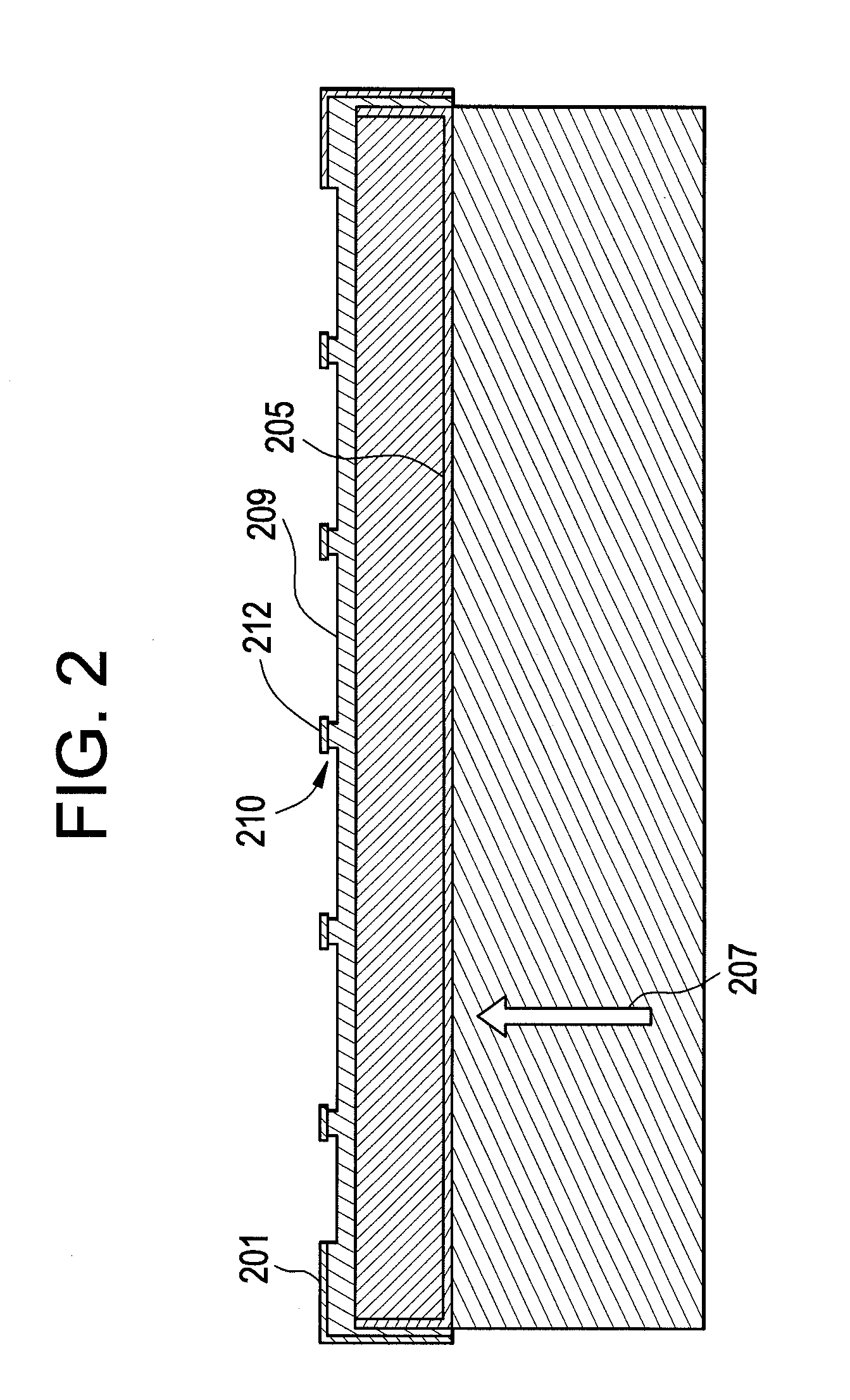High Conductivity Electrostatic Chuck
a high-conductivity, electrostatic chuck technology, applied in the direction of electrostatic holding devices, metal-working machine components, manufacturing tools, etc., can solve the problems of workpiece “sticking” problems, large charge accumulation, and inability to release workpieces
- Summary
- Abstract
- Description
- Claims
- Application Information
AI Technical Summary
Benefits of technology
Problems solved by technology
Method used
Image
Examples
Embodiment Construction
[0026]A description of example embodiments of the invention follows.
[0027]In some conventional electrostatic chucks, after numerous workpiece clamping cycles, the top surface may break down, thereby creating “islands.” Between these “islands”, the material cross sectional area may be decreased, restricting the distribution of electrical charge throughout the top doped layer. Subsequently, this creates “islands of electrical charge” where the charge polarity can be observed to reverse over several millimeters. A change of + / −400V or more over a 4-6 millimeter distance is not uncommon. This localized surface charge may lead to unintended wafer clamping even in the absence of external electrical voltage.
[0028]Accordingly, there is a need for an improved platen to control charge accumulation in electrostatic chucks.
[0029]FIG. 1 is a diagram of an electrostatic chuck 100 in accordance with an embodiment of the invention. The electrostatic chuck 100 features a conductive path to ground 10...
PUM
 Login to View More
Login to View More Abstract
Description
Claims
Application Information
 Login to View More
Login to View More - R&D
- Intellectual Property
- Life Sciences
- Materials
- Tech Scout
- Unparalleled Data Quality
- Higher Quality Content
- 60% Fewer Hallucinations
Browse by: Latest US Patents, China's latest patents, Technical Efficacy Thesaurus, Application Domain, Technology Topic, Popular Technical Reports.
© 2025 PatSnap. All rights reserved.Legal|Privacy policy|Modern Slavery Act Transparency Statement|Sitemap|About US| Contact US: help@patsnap.com



